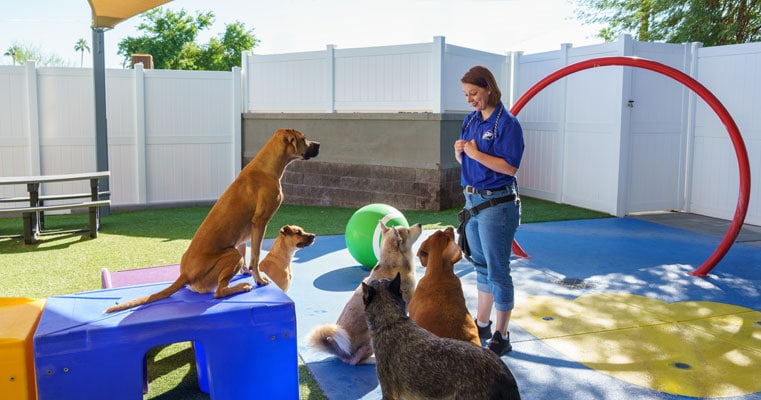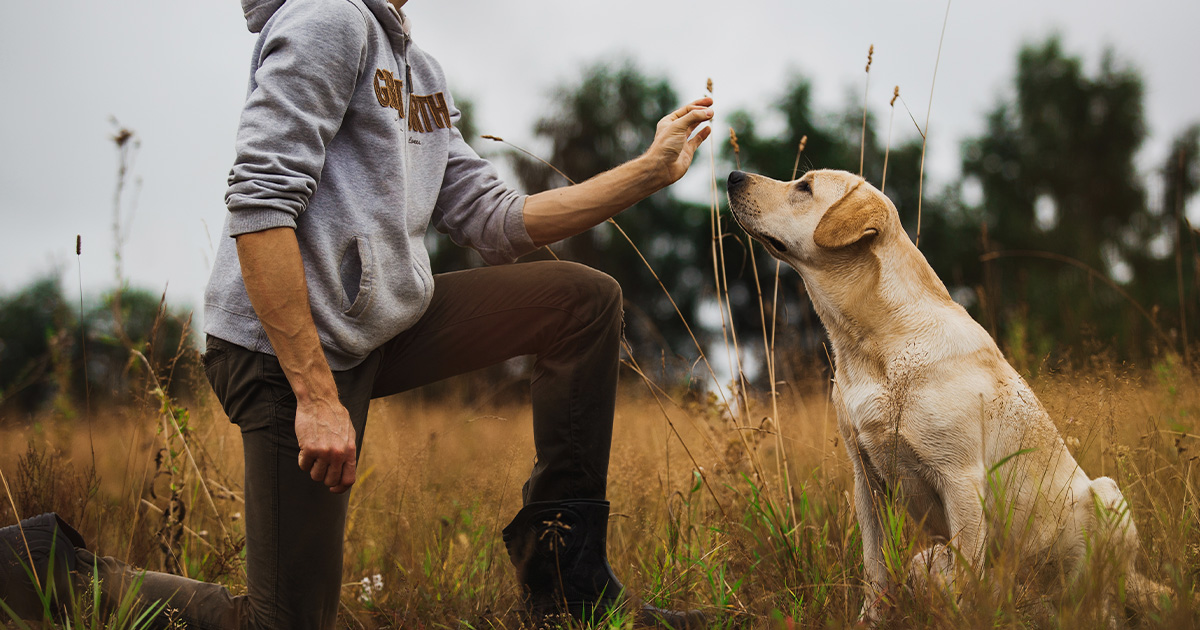Why Consistency is Key in Dog Training for Long-Term Success
Why Consistency is Key in Dog Training for Long-Term Success
Blog Article
Beginner's Guide to Successful Pet Training in your home
Effectively training a pet at home requires a nuanced understanding of canine habits and effective communication techniques. Establishing clear training goals, using top notch incentives, and preserving uniformity throughout relative are critical elements. Additionally, incorporating training right into day-to-day regimens can boost both interaction and retention. Several amateur instructors experience obstacles that might impede progression. To navigate these intricacies effectively, it's important to explore several vital aspects that can change your strategy and cause an unified relationship with your family pet. What essential concepts should every beginner grasp to guarantee success?
Comprehending Pet Dog Habits
Comprehending pet dog habits is vital for efficient training and promoting a harmonious connection in between people and their canine companions. Dogs communicate largely via body movement, vocalizations, and facial expressions, making it crucial for proprietors to translate these signals precisely. Recognizing actions such as tail wagging, roaring, or cring can provide understandings right into a canine's emotion and purposes.

Typical behavior issues, such as aggressiveness, anxiety, or too much barking, commonly stem from misconceptions or unmet needs. Observing and addressing these problems promptly can protect against escalation and make sure a favorable training experience. By fostering a deep understanding of dog habits, owners can tailor their training techniques to suit their canine friends, inevitably resulting in a well-behaved and pleased pet.
Important Training Tools
A well-equipped training space can considerably improve the performance of pet training in the house. Vital training devices make certain that both the instructor and the dog can engage in effective sessions that foster learning and bonding.

Investing in a tough leash and a comfortable, well-fitting collar or harness is crucial for security and control. These devices assist establish limits and guarantee the pet stays secure throughout training. Additionally, a marked training area, devoid of diversions, aids concentration for both the pet and the fitness instructor.
Educating aids such as training pads, cones, or dexterity equipment can likewise boost the experience by introducing range and challenges. Finally, having a note pad or digital app for tracking development can be vital, allowing you to keep in mind successes and locations for improvement. Making use of these vital devices will produce a favorable training setting and lay the structure for effective discovering.
Developing a Training Routine
Establishing a constant training regimen is essential for efficient pet dog training in the house. A well-structured regular not just helps in strengthening preferred actions yet also supplies your pet with a feeling of safety and security and predictability. To produce an efficient training routine, begin by determining certain training objectives, such as standard commands, chain strolling, or housebreaking.
Pick a designated time daily for training sessions, ideally when your canine is sharp and receptive. Procedure should be short, about 5 to 15 minutes, to maintain focus and avoid fatigue. Consistency in timing and environment will certainly boost your pet's discovering experience.
Integrate training into daily tasks to reinforce abilities. Technique commands during strolls or nourishment, which incorporates discovering into all-natural regimens. Furthermore, stay adaptable and adjust the regular as needed, fitting your canine's energy degrees and mood.
Positive Reinforcement Strategies
Positive reinforcement strategies are basic to efficient dog training, advertising wanted actions with rewards instead than punishment. This approach uses favorable stimuli, such as deals with, appreciation, or play, to motivate dogs to repeat certain actions. The keystone of this method is timing; rewards must be given promptly following the wanted habits to develop a clear organization.
When applying positive support, it is vital to pick incentives that are motivating for your canine. High-value deals with, such as tiny items of poultry or cheese, can be specifically effective throughout training sessions. In addition, varying the incentives can maintain your pet dog's interest and interest.
Start with More Bonuses basic commands, like "rest" or "stay," and slowly progression to more complicated jobs. Consistency is essential; ensure that all family members utilize the very same commands and reward systems to stay clear of complication.
In addition, it is crucial to continue to be patient and prevent aggravation. Pets, like humans, learn at their own rate. By fostering a supportive training atmosphere via favorable reinforcement, you can enhance your pet dog's learning experience while strengthening the bond between you and your fuzzy companion, preparing for successful training end results.
Usual Training Challenges
While training a canine in your home can be a fulfilling experience, it frequently includes a set of typical difficulties that can check both perseverance and uniformity. One widespread problem is disturbance. Dogs may become easily sidetracked by sounds, movements, or perhaps scents in their environment, making it difficult to maintain their emphasis throughout training sessions.
An additional obstacle is variance in commands and support. It can puzzle image source the canine and hinder development if family members make use of various hints or rewards. Developing a unified strategy is necessary for effective communication.
In addition, pets can experience stress or stress and anxiety, particularly if they do not recognize what is expected of them. This can lead to unwanted habits, such as chewing or barking.
Ultimately, the timing of support is vital (Dog training). Delayed rewards can lessen the efficiency of positive support, as canines may fail to link the behavior with the incentive
Overcoming these obstacles calls for commitment, clear interaction, and a structured training plan. Recognizing and resolving these usual obstacles will lead the way for an extra pleasurable and effective training experience at home.
Verdict
Finally, effective canine training in your home demands an extensive understanding of canine actions and efficient interaction methods. By establishing clear training goals and making use of premium deals with alongside favorable support, the training process ends up being extra gratifying for both the pet and the trainer. Uniformity, adaptability, and patience are crucial parts that facilitate knowing. Eventually, integrating training right into day-to-day regimens boosts the bond in between pet and proprietor, making the experience both productive and pleasurable.
Developing a constant training routine is necessary for effective dog training at home.Favorable reinforcement methods are fundamental to effective dog training, promoting desired behaviors with rewards rather than penalty (Dog training). By cultivating a helpful training atmosphere via favorable reinforcement, you can click this link enhance your canine's learning experience while strengthening the bond in between you and your fuzzy companion, laying the foundation for successful training results
In final thought, successful canine training at home requires an extensive understanding of canine behavior and effective interaction approaches. By developing clear training goals and using top notch treats together with favorable reinforcement, the training procedure becomes more gratifying for both the dog and the fitness instructor.
Report this page